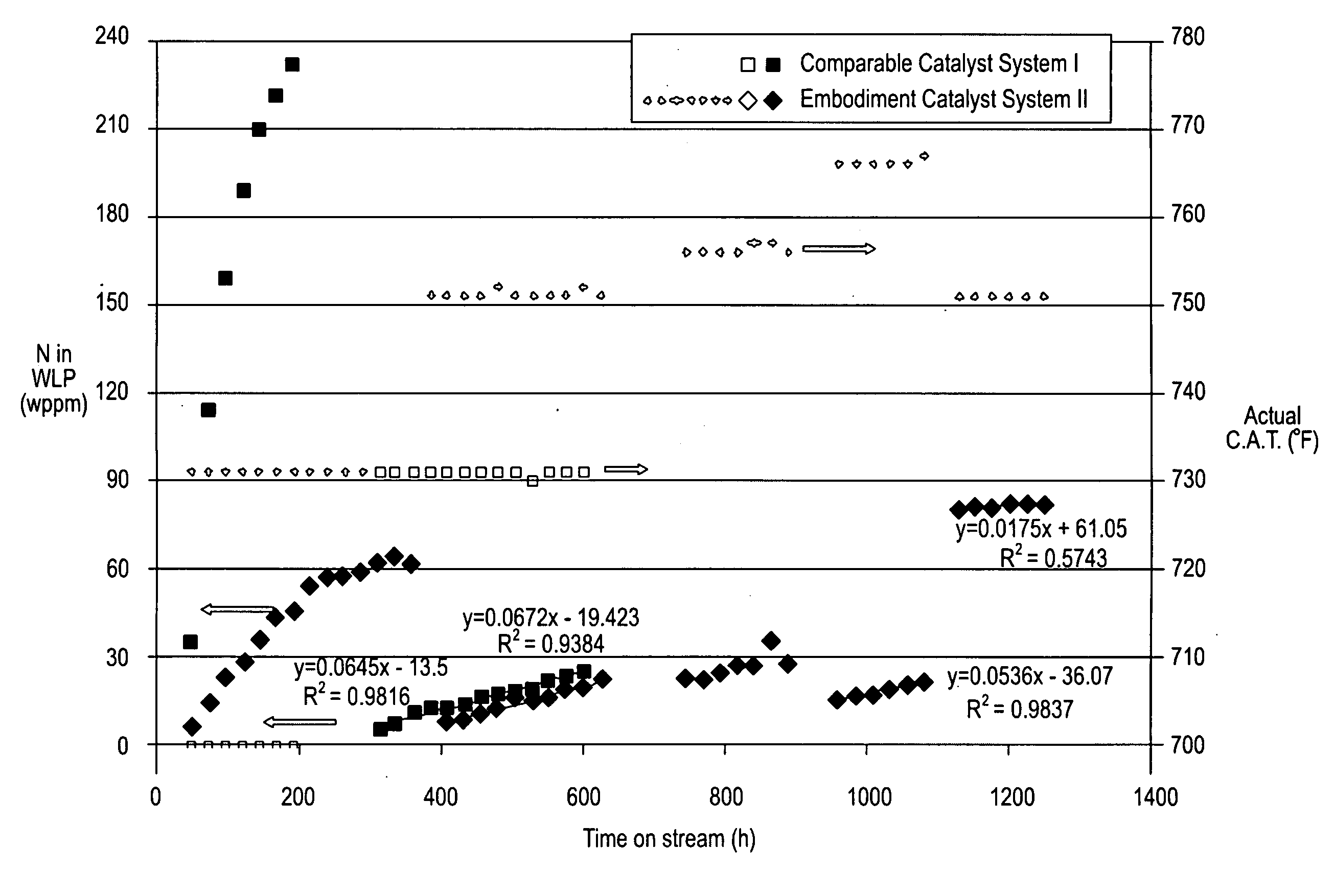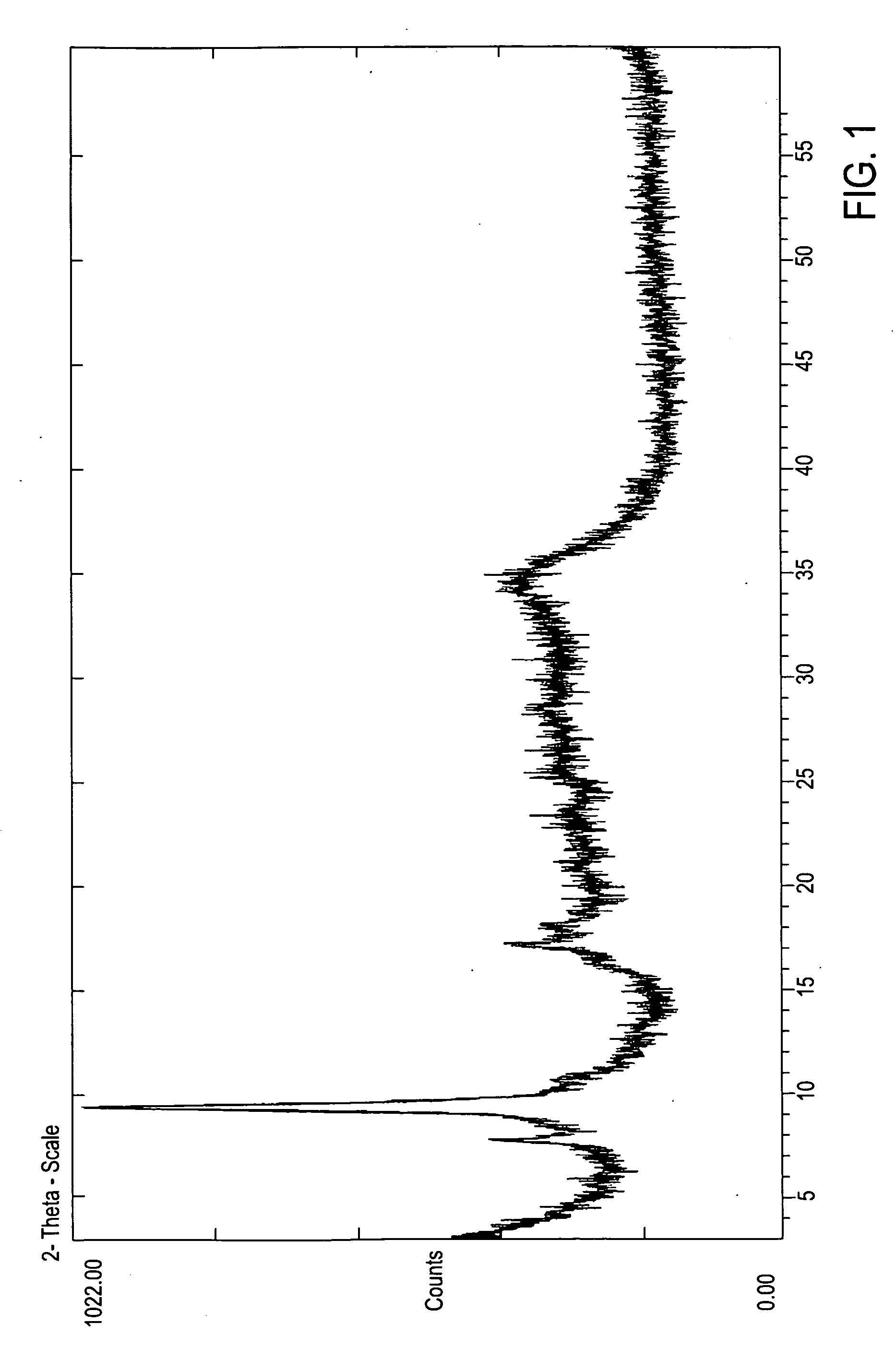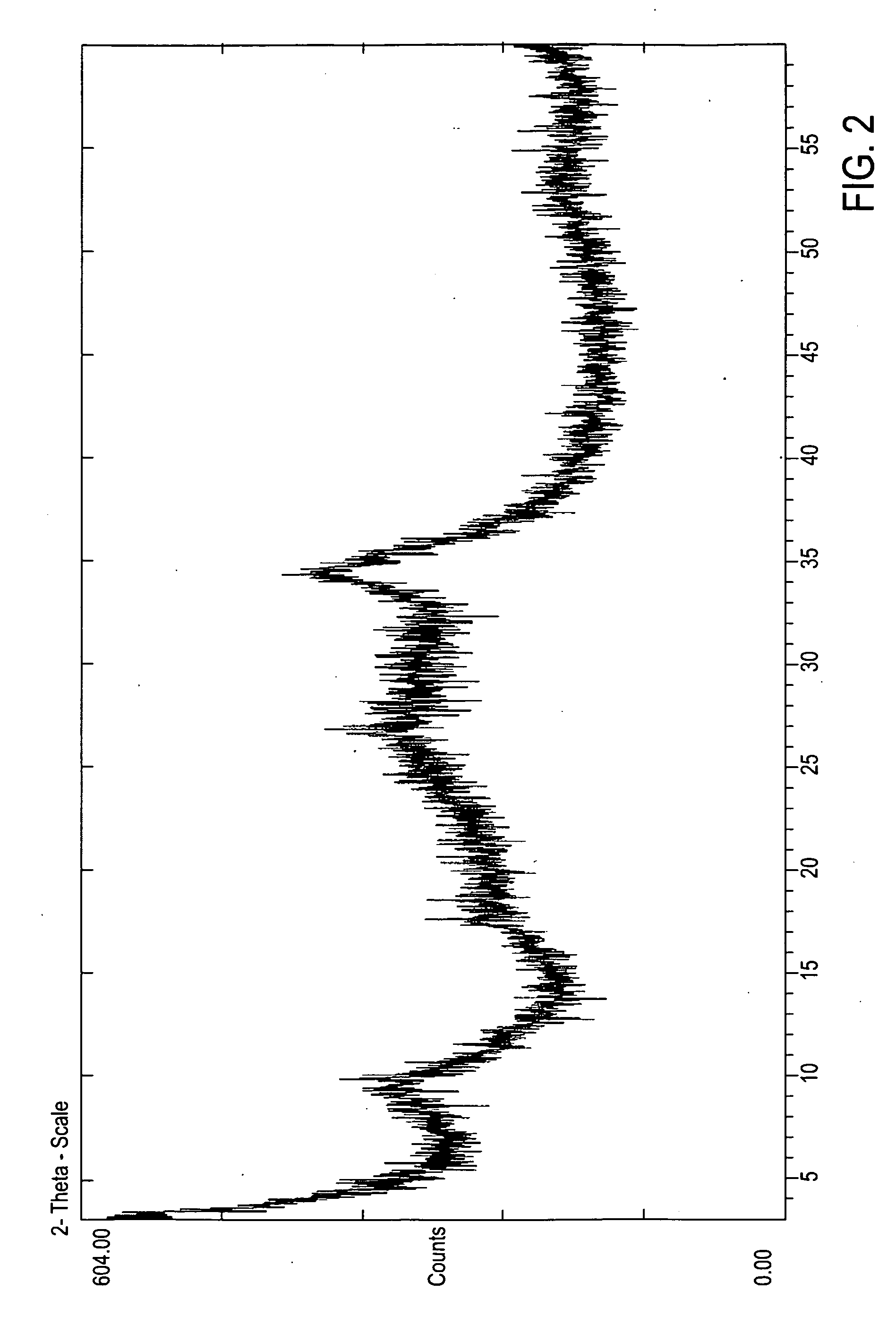Hydroconversion Processes Employing Multi-Metallic Catalysts and Method for Making Thereof
- Summary
- Abstract
- Description
- Claims
- Application Information
AI Technical Summary
Benefits of technology
Problems solved by technology
Method used
Image
Examples
example 1
[0148]Ni—Mo—W-maleate catalyst precursor. A catalyst precursor of the formula (NH4) {[Ni2.6 (OH)2.08 (C4H2O42−)0.06] (Mo0.35W0.65O4)2} was prepared as follows: 52.96 g of ammonium heptamolybdate (NH4)6Mo7O24 .4H2O was dissolved in 2.4 L of deionized water at room temperature. The pH of the resulting solution was within the range of 5-6. 73.98 g of ammonium metatungstate powder was then added to the above solution and stirred at room temperature until completely dissolved. 90 ml of concentrated (NH4)OH was added to the solution with constant stirring. The resulting molybdate / tungstate solution was stirred for 10 minutes and the pH monitored. The solution had a pH in the range of 9-10. A second solution was prepared containing 174.65 g of Ni(NO3)2.6H2O dissolved in 150 ml of deionized water and heated to 90° C. The hot nickel solution was then slowly added over 1 hr to the molybdate / tungstate solution. The resulting mixture was heated to 91° C. and stirring continued for 30 minutes. T...
example 2
[0149]Co—Mo—W-maleate catalyst precursor. A catalyst precursor of the formula (NH4) {[Co3.0 (OH)3.0-c (C4H2O42−)c / 2] (Mo0.34W0.66O4)2} was prepared as follows: 2.0 g of maleic acid was dissolved in 800 g of deionized water at room temperature. The pH of the resulting solution was within the range of 2-3. 17.65 g of ammonium heptamolybdate (NH4)6Mo7O24 .4H2O powder was dissolved in the above solution, followed by addition of 24.67 g of ammonium metatungstate (NH4)6H2W12O40 .xH2O (>66.5% W). The pH of the resulting solution was within the range of 4-5. 30 ml of concentrated (NH4)OH was added to the solution with constant stirring. The resulting molybdate / tungstate solution was stirred for 10 minutes and the pH monitored. The solution had a pH in the range of 9-10 at room temperature and was heated to 90° C. A second solution was prepared containing 58.28 g of cobalt nitrate dissolved in 50 g of deionized water. The hot cobalt solution was then slowly added over 25 min to the hot molyb...
example 3
[0150]Co—Mo—W catalyst precursor. A catalyst precursor of the formula (NH4)+{[Co3.31 (OH)3.62] (Mo0.3W0.7O4)2} was prepared according to the following procedure: 17.65 g of ammonium heptamolybdate (NH4)6Mo7O24 .4H2O powder was dissolved in 800.00 g of deionized water at room temperature followed by addition of 24.66 g of ammonium metatungstate (NH4)6H2W12O40 .xH2O (>66.5% W). The pH of the resulting solution was within the range of 5.2-5.4. A second solution was prepared containing 58.26 g of cobalt nitrate hexahydrate dissolved in 50.0 g of deionized water. The pH of the resulting solution was within the range of 1-2. 30 ml of concentrated (NH4)OH was added to the solution with constant stirring. Initially moss green in color precipitate was formed later turning into a 2 layer mixture with a greenish suspension at the bottom and a top brownish layer. The cobalt containing mixture was then slowly added over 25 min to the molybdate / tungstate solution at room temperature. The pH of th...
PUM
| Property | Measurement | Unit |
|---|---|---|
| Temperature | aaaaa | aaaaa |
| Temperature | aaaaa | aaaaa |
| Temperature | aaaaa | aaaaa |
Abstract
Description
Claims
Application Information
 Login to View More
Login to View More - R&D
- Intellectual Property
- Life Sciences
- Materials
- Tech Scout
- Unparalleled Data Quality
- Higher Quality Content
- 60% Fewer Hallucinations
Browse by: Latest US Patents, China's latest patents, Technical Efficacy Thesaurus, Application Domain, Technology Topic, Popular Technical Reports.
© 2025 PatSnap. All rights reserved.Legal|Privacy policy|Modern Slavery Act Transparency Statement|Sitemap|About US| Contact US: help@patsnap.com



